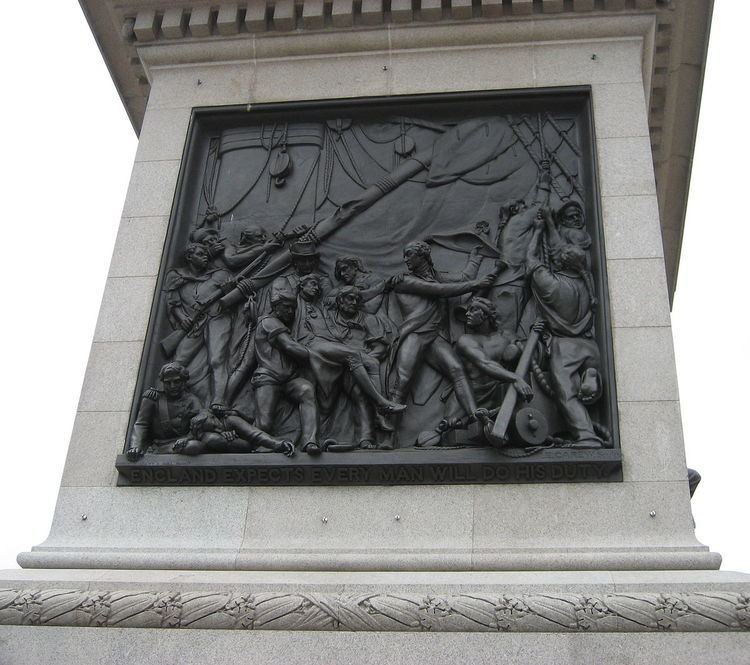Name John Carew Role Sculptor | Died December 1, 1868 | |
 | ||
Jonn Edward Carew
John Edward Carew (c. 1785 – 1 December 1868) was a notable Irish sculptor during the 19th century. His most prominent work is the Death of Nelson – one of the four bronze panels on the pedestal of Nelson's Column in Trafalgar Square.
Contents

Life

Thought to be the son of a local stonecutter, Carew was born in Tramore, and studied art in Dublin. Around 1809, he came to London to work for Sir Richard Westmacott. For part of the time he worked with Westmacott he also had his own studio in the Edgware Road.
In 1831 he moved to a studio in Brighton, to be nearer Petworth House, home of George Wyndham, 3rd Earl of Egremont who was his main patron from the mid-1820s until the earl's death in 1837. Carew later moved to Grove House near Petworth. When Egremont died leaving no provision for him in his will, the sculptor sued the earl's executors for £30,000. Ten thousand pounds of this was for "loss of time in the attendance on the late Lord Egremont". Carew claimed that he had not been properly paid for the sculptures made for Petworth, and that he had sacrificed commercial success by moving to Sussex to be near the earl. The defence produced evidence that Carew had been generously paid, and that Egremont had done all he could to promote his reputation. Carew's counsel withdrew the case. Carew was declared bankrupt in 1842.
Petworth still has a superb collection of Carew's work in marble, including the neo-classical mythological subjects Arethusa (1823), Adonis and the Bear (1826), The Falconer (1831) and Prometheus and Pandora (1838), and a series of busts, among them a portrait of Egremont (1831). He also produced a monument to the Earl's Percy ancestors in the baptistry of St Mary's, Petworth.
In the years following the court case, Carew received several prominent public commissions, including the Royal Arms and the statue of Richard Whittington for the façade of the Royal Exchange (1844), and a statue of Henry Grattan for St Stephen's Hall in the Palace of Westminster (1857). He was selected to make the bronze relief of the death of Nelson, for the pedestal of Nelson's Column; it was installed in December 1849. For the Catholic cathedral at St John’s, Newfoundland, Carew executed a several statues and an elaborate altarpiece.
Carew exhibited at the Royal Academy between 1812 until 1848 when his eyesight began to fail. He was buried in Kensal Green Cemetery.
Works
Other statues by Carew include:
Church work includes:
